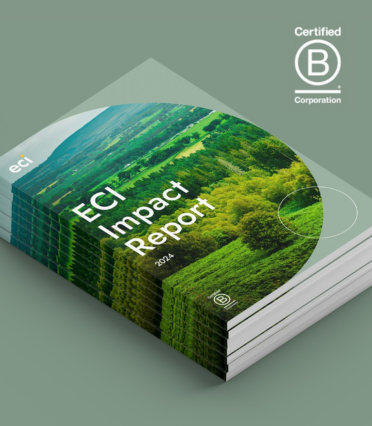
ECI’s Commercial Team has been supporting our portfolio CEOs and their HR leaders with how they think about their people’s wellbeing for a number of years, but Covid-19, its associated stresses and the shift to working from home has pushed mental health and wellbeing up the agenda like nothing before it.
To support our portfolio companies in helping their people we facilitated a wellbeing survey that they could roll out as pulse checks, and shared best practice from across our portfolio. It has been great to see the initiatives that have emerged to support people in these difficult times, and as people start to return to work, the question people are asking is, what next?
In this portfolio perspective series, we surveyed CEOs and HR leaders across our portfolio, to understand how they responded to lockdown, and what initiatives they plan to take forwards. Across the series we’ll be looking to answer questions around getting the future of working from home right; making sure you have visibility over what matters; building on the wellbeing momentum; a changing communication strategy; and how to best harness the positive momentum from lockdown. In this third piece in the series, we ask…
How can we build on the wellbeing momentum?
The Covid lockdown accelerated businesses’ awareness of, and desire to directly support, their employees’ wellbeing and mental health. This awareness is an acknowledgement of the real problems and difficulties caused by the pandemic. Whether it was anxiety around contracting Covid, bereavement, perceived lack of job security, added pressures of care for children or relatives, or isolation, it is little surprise that 2020 has been such a difficult year for mental health. A recent Monster survey found that more than 50% of respondents who are working from home due to Covid are experiencing burnout. In the first half of the year many people also didn’t want to use their holiday to stay at home, so over half of respondents of that survey also said they didn’t have plans to take time off to decompress.
This is the background in which employers, who have been striving to make gains in employee wellbeing over the last few years, were spurred into much faster action. And whilst the lines between work and home becoming blurred had some obvious negative connotations – having a ten foot commute at the end of the day can create little separation between work and play – it also meant that the relationship dynamic between employer and employee shifted so that personal circumstances became increasingly relevant and conversations around them easier.
Our portfolio’s employee wellbeing surveys showed an overwhelmingly positive response to company initiatives – whether it was team yoga or videos on mindfulness exercises. However, the novel situation may have meant novel approaches were appropriate, but only for a time. Which initiatives should be taken forward? How can management teams and HR leaders build on the positive conversations and open dynamic that has been created, and what questions might they need to consider in order to do so successfully?
What is expected going forwards?
Whilst it can feel as if a great step forward on wellbeing had occurred during lockdown, it is important to find out from your people what has really helped on a long-term as well as a short-term basis. Positive feedback to a work quiz to help combat isolation doesn’t mean people want it to continue as a version of normal life resumes.
It is also important to recognise that employees will have experienced lockdown, and its subsequent easing in very different ways. Did they have more time on their hands, or less? Did working remotely mean a struggle to detach from work, or a struggle to work productively? Some may have been reassured by a stream of communication from their managers, whilst for others it may have created pressure that detracted from their job. It is therefore important to develop a mental health strategy that not only supports those who are struggling and require assistance, but also a strategy to help identify those who may be worried to ask for support and foster an environment where employees feel comfortable asking for help.
So, whilst the key is communication, it is important to remember that when assessing responses, this isn’t about finding the average and ending up with the right answer. If half of your workplace is doing brilliantly and half are finding it impossible, it doesn’t mean everyone is doing fine. Assess the different responses appropriately and leverage the open dialogue that has been boosted by the lockdown to try and get visibility over what is expected by your teams going forwards.
How can employee wellbeing be embedded in company culture?
Embedding wellbeing takes work, leadership and good communication. Just as it took deliberate effort at the start of lockdown, so will maintaining that positive momentum post-Covid; it won’t just happen.
We have seen our portfolio companies respond in creative and highly effective ways including: pairing people to check-in with each other and providing training on how to check-in effectively; developing proprietary video content on wellness advice; providing 24/7 access to counselling services; implementing support structures for those grieving; prioritising office space for those who would benefit the most from working outside of the home; and at the more light-hearted end, creating online channels where people can connect outside of the day job such as cooking clubs, exercise classes etc.
It is important that training and guidance is distributed in a structured way, ensuring it is accessible and easy to understand by all. For example, ECI’s chosen charity partner, The Charlie Waller Memorial Trust, offers workplace training based on a ‘whole organisation’ approach, so that positive mental health culture is embedded within the ethos of the organisation. Don’t just train managers how to offer support, teach people how to have conversations about their own mental health. Not only will this provide people with useful communication skills to talk about mental health, it flags to staff that your workplace is somewhere where those conversations are welcome and encouraged.
Leadership teams that show this encouragement from the top, such as filming interviews with senior leaders on mental wellness and maintaining top down communication on initiatives, will find it easier to embed these values in their organisation post-lockdown.
What needs to be broad and what needs to be specific?
Positive dialogue around wellbeing and frequent communication demonstrating a culture of care, will benefit everyone. Even those who may not ‘need’ help in the immediate sense, will still value the environment it creates. Training that fosters a positive mental health culture is therefore an overall good.
However, Covid has shone a light on the fact that this isn’t enough, and people will have different reactions to similar pressures that means a more diverse mental health strategy is needed. One of ECI’s portfolio companies, MiQ, was quick to recognise the need for a tailored mental health response to the crisis and implemented a number of programs which have gained widespread positive feedback from employees. Sara Axelbaum, Global Head of Inclusion and Diversity at MiQ said, “we recognised that there is no silver bullet, so developed a system tailored to employees with time to fill and those with too much to do, those mentally fine and those who are struggling. It was also important we addressed bias to help create a culture at MiQ where mental health is as open a topic as physical health.” Being able to combine both day to day wellness and also access to a mental wellness expert, has meant that they were able to support people across the breadth of the spectrum.
MiQ also brought in anti-stigma training via Stigma Zero for all employees, elevated all resources to be easily accessed, welcomed speakers to talk about mental health and fortitude, and provided an all-hands meeting to talk about how COVID-19 may impact mental health through a range of responses. Mental Health became a topic addressed by all levels of management throughout the organization and transparency was increased to help employees feel more clued in and at ease during a time of distress and remote working.
Initiatives that can be tracked anonymously so you can measure uptake and feedback will help you to understand their value. However, keep in mind that if uptake is only a few employees it could still be highly impactful to those who do use it, and other employees may still value knowing support is available, even if they don’t actually use it.
How can tech be used to help with employee wellbeing?
Tech has been hugely helpful as a means of broader communication during lockdown. For example, ECI portfolio company Moneypenny used Facebook Workplace to create a strong sense of community, and to survey its employees unobtrusively on wellbeing pulse checks or specific issues such as returning to the office.
There are also a number of apps which can support wellbeing, such as Calm, Unmind or others. Alternatively, there are online tools that provide employees with access to mental health and wellbeing experts, such as the Ginger app used by MiQ.
It can be easy to overload people with different support and initiatives so as a starting point make sure you have one easy point of access, such as your intranet, to clearly highlight what help is available. For example, at portfolio company MiQ they set up a “Get Help Now” section which covered health insurance details, what is covered and who to reach out to. Setting up provision is just one step; make sure initiatives aren’t underutilised because people aren’t clear as to what is available or don’t have clear instructions on how to access.
It is important to maintain use of tech when people start returning to the office and there is a ‘hybrid’ system in place. In lockdown everyone was ‘in it together’ and that not only helped morale, but also made it easier to streamline initiatives. Keeping up momentum will be important, and it may be best to operate as if everyone is still working from home for a while, so as not to neglect those who are not yet in the office environment.
Similarly, even once everyone is back in the office or a vaccine has been rolled out, it doesn’t mean that these initiatives should stop. Whilst much of the wellbeing response has been Covid-related, it doesn’t mean it is Covid-specific. The pandemic has facilitated what was probably an overdue movement in mental health and wellbeing that should be built upon and not left behind in the future of work.



